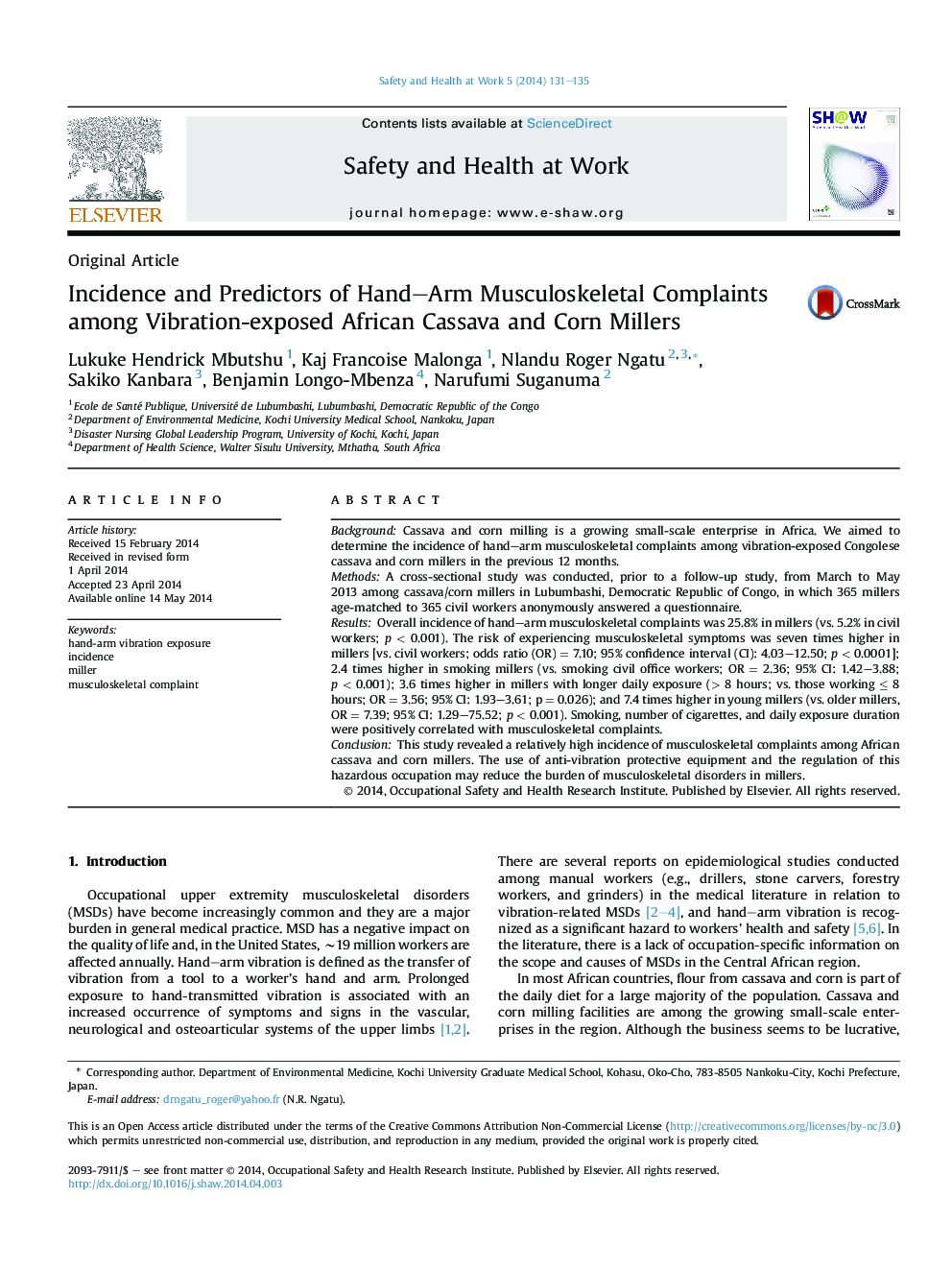| Article ID | Journal | Published Year | Pages | File Type |
|---|---|---|---|---|
| 1092033 | Safety and Health at Work | 2014 | 5 Pages |
BackgroundCassava and corn milling is a growing small-scale enterprise in Africa. We aimed to determine the incidence of hand–arm musculoskeletal complaints among vibration-exposed Congolese cassava and corn millers in the previous 12 months.MethodsA cross-sectional study was conducted, prior to a follow-up study, from March to May 2013 among cassava/corn millers in Lubumbashi, Democratic Republic of Congo, in which 365 millers age-matched to 365 civil workers anonymously answered a questionnaire.ResultsOverall incidence of hand–arm musculoskeletal complaints was 25.8% in millers (vs. 5.2% in civil workers; p < 0.001). The risk of experiencing musculoskeletal symptoms was seven times higher in millers [vs. civil workers; odds ratio (OR) = 7.10; 95% confidence interval (CI): 4.03–12.50; p < 0.0001]; 2.4 times higher in smoking millers (vs. smoking civil office workers; OR = 2.36; 95% CI: 1.42–3.88; p < 0.001); 3.6 times higher in millers with longer daily exposure (> 8 hours; vs. those working ≤ 8 hours; OR = 3.56; 95% CI: 1.93–3.61; p = 0.026); and 7.4 times higher in young millers (vs. older millers, OR = 7.39; 95% CI: 1.29–75.52; p < 0.001). Smoking, number of cigarettes, and daily exposure duration were positively correlated with musculoskeletal complaints.ConclusionThis study revealed a relatively high incidence of musculoskeletal complaints among African cassava and corn millers. The use of anti-vibration protective equipment and the regulation of this hazardous occupation may reduce the burden of musculoskeletal disorders in millers.
